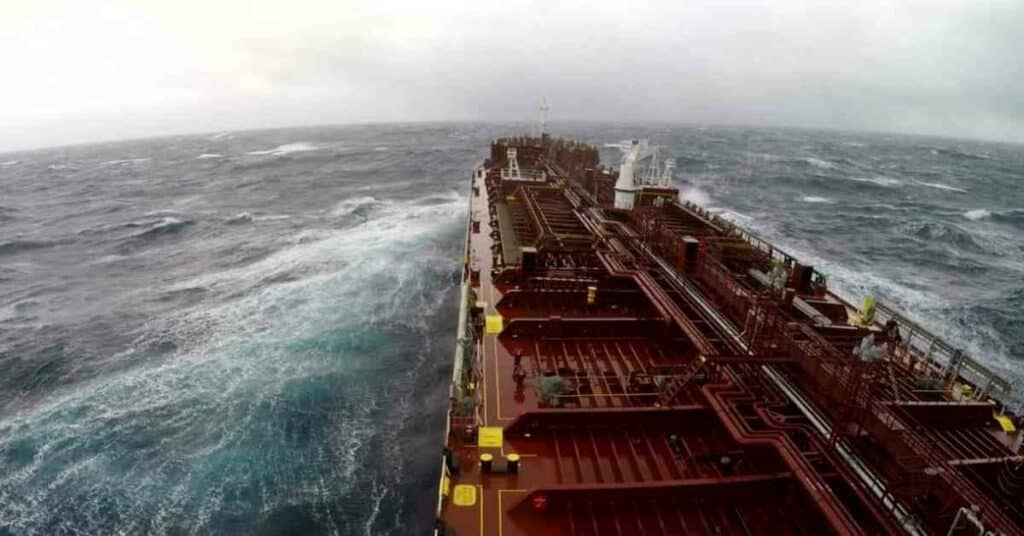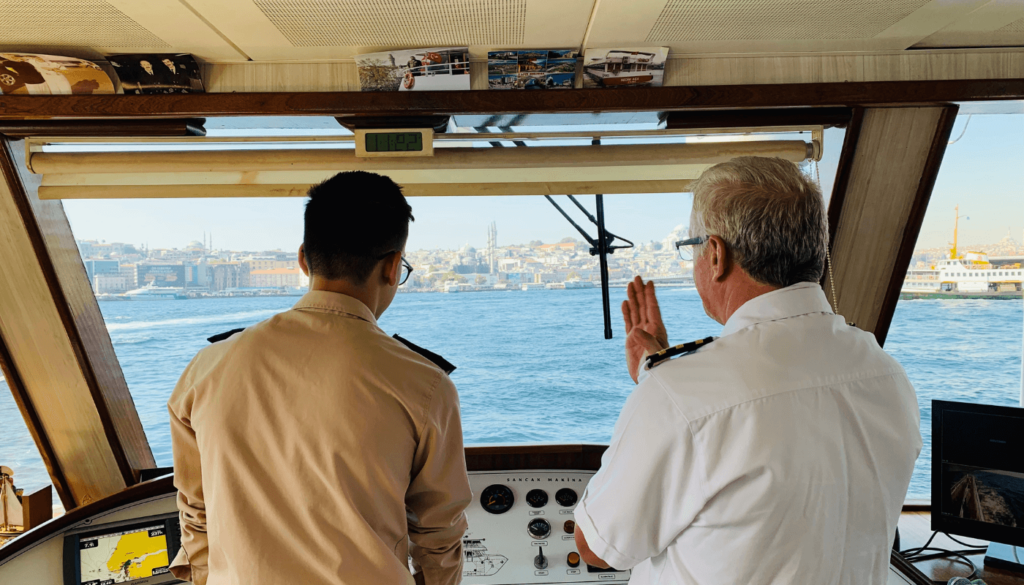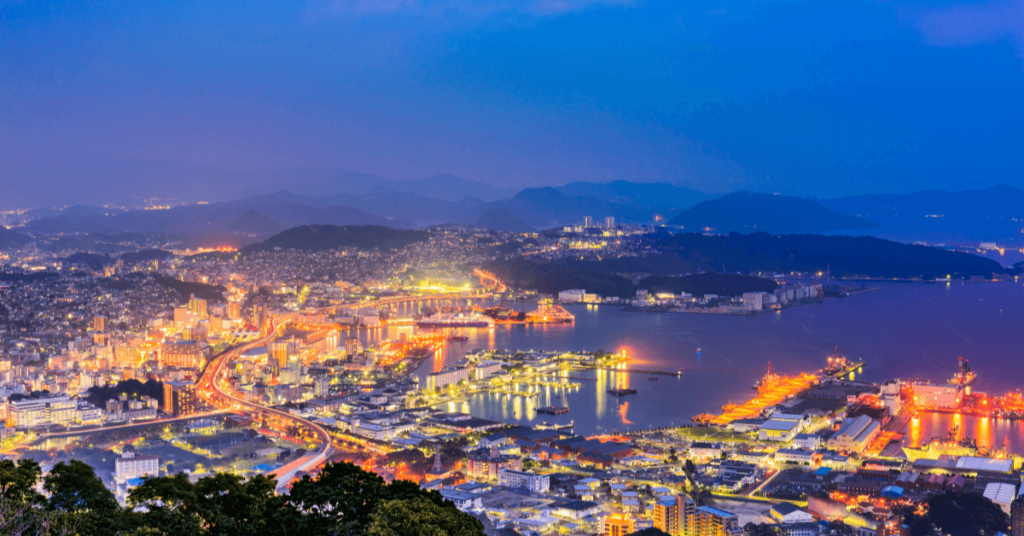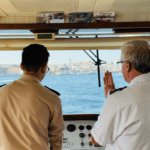10 Biggest River Ports In The World
River ports are facilities situated along rivers, mainly deeper and longer water bodies, that function as entry points or points of departure for maritime transportation. They are trade hubs where vessels, barges, and ferries can dock to load or unload cargo and people.
River ports are vital for internal trade and are equipped with all the required infrastructure, such as docks, wharves, warehouses, piers and handling equipment.
In this article, let us look at the ten biggest river ports in the world.
1. Port of Shanghai, China
Shanghai functions as the country’s main financial, industrial and commercial centre.
Famous as the busiest port in the world, Shanghai is a deepsea port and a river port. The port began operations in 1842 and, over the years, has become an important regional facility covering approximately 4 square kilometres at the mouth of the Yangtze River.
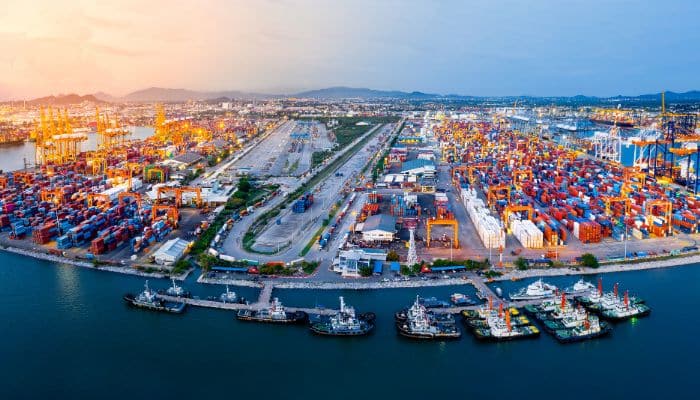
Located in the middle of the 18,000-kilometre-long Chinese coastline, it mainly deals with coal, metal ores, petroleum products, steel, machinery, equipment etc.
It handles more than one-fourth of all Chinese cargo and 99% of all Shanghai’s foreign trade.
The port has 5 working zones; the Yangtze River Sanctuary, the Huangpu River mouth at Wusongkou, Waigqoqiao and Pudong coast. At these regions lie several port terminals with specialised facilities.
Approximately 582,000,000 tonnes of cargo, including 29,500,000 TEUs and 13,243,000 passengers, are handled annually here.
2. Port of Rotterdam, Netherlands
Rotterdam Port is the largest port in Europe and also one of the world’s busiest facilities. It lies on the Rhine-Meuse-Scheldt delta, where the Rhine and Meuse rivers meet before draining into the North Sea.
The port is a key shipping hub for containerised cargo, bulk like coal, oil, iron ores, machinery, petroleum and chemical products, agricultural goods etc.
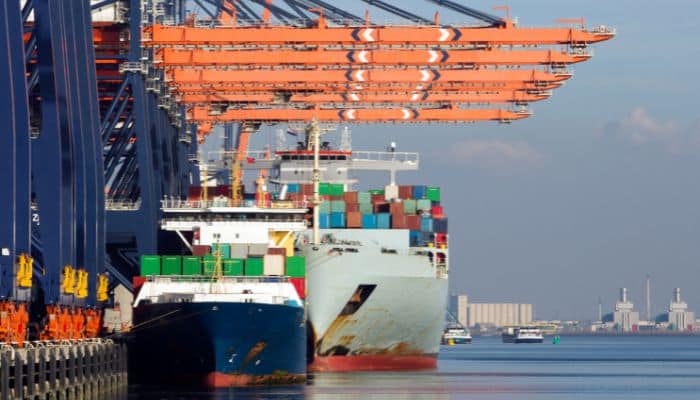
It has multiple terminals and berths like the ECT Delta Terminal, one of the biggest container terminals in Europe, the EMO terminal and the Botlek terminal.
In 2022, the port handled 467.4 million tonnes of cargo, and in 2021 it handled 468. 7 million tonnes.
The Rotterdam Port has more than 500 deepsea feeders, RORO liners and short sea connections to over 1000 ports across the globe, making it a key European port.
3. Port of Hamburg, Germany
Port of Hamburg lies on the Elbe River, 65 nautical miles from the North Sea. It is the biggest port in Germany, with more than 320 berths. It handles various cargoes but is known for its container and petroleum shipments. It is called the country’s gateway to the world.
The harbour is one of the main attractions of the city. It is an industrial and logistics centre and also home to museum ships, restaurants, bars, theatres for musicals and also a floating church.
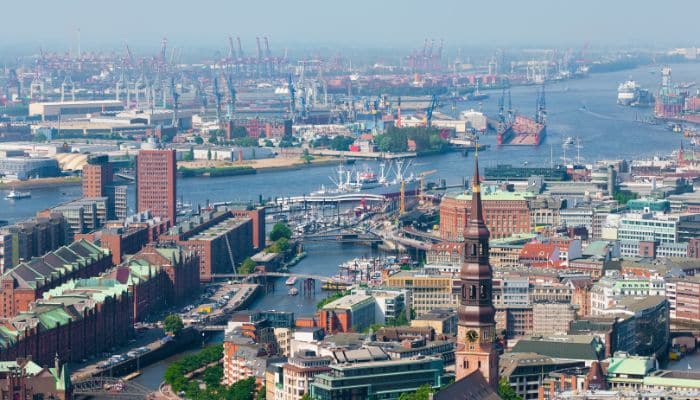
Hamburg port spans 73.99 km2, and the branching of river Elbe has created an ideal complex equipped with warehousing and transhipment facilities.
The port has numerous terminals handling RORO, metals, forest products, citrus fruits, machines, etc. It also has a cruise terminal.
Approximately 121,200,000 tonnes of cargo, 8,000,000 TEU and 112,200 passengers are handled annually.
4. Port of Antwerp, Belgium
Antwerp Port is located 80 kilometres from the North Sea on the Scheldt River. It has a long history of trading, with its potential as a seaport being recognised by Napolean Bonaparte, who ordered the construction of its first dock in 1811.
Today it is a multi-product industrial port facility covering 13,000 ha with more than 530 ha of sheltered storage. It can accommodate Capesize ships.
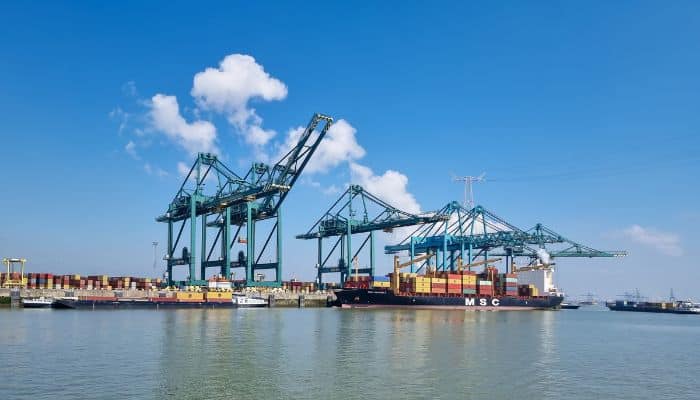
The port mainly deals with ores, coal, petroleum and steel products, cereals, crude oils, paper, cellulose, sugar, fruits etc.
The port has witnessed rapid expansion with the construction of non-tidal terminals to the north and west of the Schedt River. Approximately 187,151,000 tonnes of cargo and 8,664,000 TEU pass through this port every year.
5. Port of New Orleans, U.S.
New Orleans Port is situated on the Mississippi River, around 100 miles upriver from the Gulf of Mexico. It has cargo handling facilities on both sides of the river.
The New Orleans Port, harbour and terminal district includes these port areas and terminals; the Avondale, Gretna, Marrero, New Orleans, Westwego and Alliance.
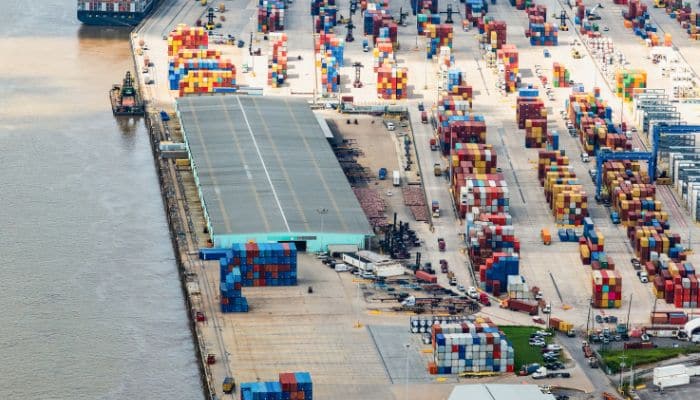
Main cargoes handled here include steel, poultry, forest products, rubber, coffee, copper, aluminium, grains, RORO, wood, paper, plastic resins, packaged food, containers etc.
It is also the only deepwater container facility in Louisiana with an annual capacity of over 850,000 TEUs.
Approximately 69,749,000 tonnes of general and bulk cargo, 477,500 TEU, 2,000 vessels, and 750,000 passengers from cruise ships are handled annually.
6. Port of Osaka, Japan
Osaka Port lies within Osaka Bay, between the Nakajima River and Yamato River estuary on the southwestern coast of Honshu, Japan.
It is a major centre for domestic as well as international maritime trade. The port is well-protected by breakwaters measuring 4703 metres and is situated around 20 kilometres southeast of the city of Kobe.
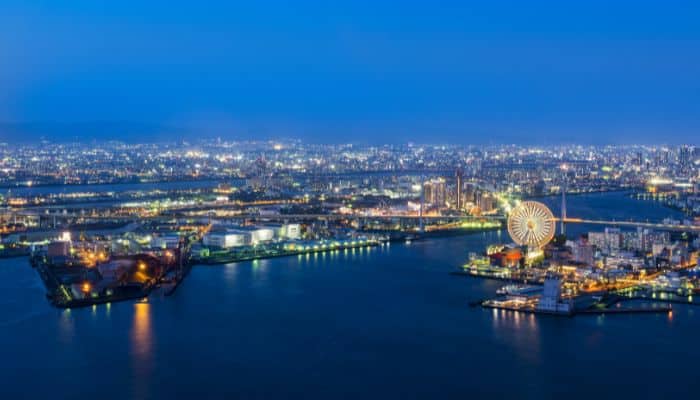
The port’s southern border is the Yamato River and the Sakai City, while the Kanzaki River forms its northern boundary.
Osaka Port has 3 main areas of operation, which include the Inner Harbour, the South Harbour and the North Harbour. The port has more than 70 berths, including 13 berths dedicated to container handling.
Diverse cargo like timber, coal, LPG, crude oil, bananas, chemicals, general cargo etc., is handled here.
In 2007, Osaka Port, Sakai-Senboku Amagasaki/Nishinomiya/Asia and Kobe Ports were unified into what is now called the Hanshin Port.
Approximately 80,994,000 tonnes of cargo, 1,844,000 TEU and 1,683,000 passengers are handled annually here.
7. Port of London, United Kingdom
London is the principal port facility of the UK, situated on the Thames River in southeastern England. It has wet docks and riverside terminals that together deal with more cargo than any other port in the country, including containers, RORO, project cargo, liquid and dry bulk, general cargo etc.
The port is extensive and stretches 150 km from the North Sea to the Teddington Lock. Many large docks and basins close to London City are used by recreational crafts.

The Thames comprises port areas of Barking, Coryton, Canvey Island, Erith, Dagenham etc. There is one enclosed dock system at Tilbury Port and many tidal berths too.
The Thames is the busiest inland waterway in the UK, and the London Port handles approximately 10,850 ships, 48,10,000 tonnes of cargo and 850,000 TEUs annually.
8. Port of Kolkata, India
Kolkata Port lies on the Hugli River, a tributary of the Ganges River. It is approximately 80 nautical miles from the Bay of Bengal. The port extends about 23 nautical miles along the river, going from Konnager, 9 nautical miles upstream to the docks and then the petroleum wharves.
It has berths for handling most cargo types and also facilities for maintenance and repair, both owned by private players and the Port Trust.
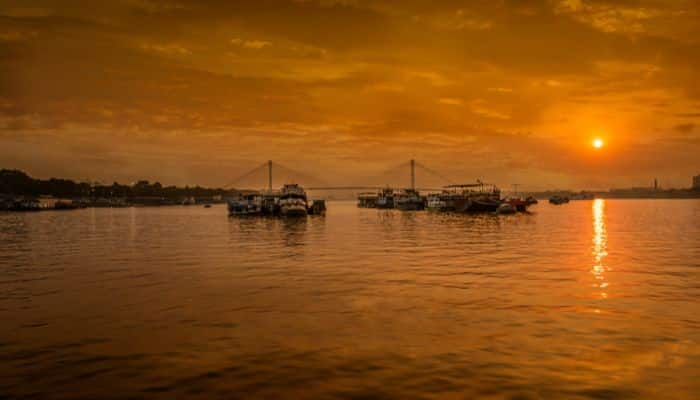
Kolkata Port included the Kolkata Dock System and the Haldia Dock Complex. The former comprises of Kidderpur Docks, Netaji Subhas Dock and the Petroleum wharves located at Budge Budge.
The Virtual Berth, Sager Island, is a transhipment berth used by Panamax ships discharging cargo into barges.
Main imports handled at the port include iron, steel, metals, grains, machines, fertilisers, sulphur and rock phosphates, vegetable oil, timber, cement etc.
Major exports consist of coal, jute, gunnies, tea, grains, linseed, castor oil, mica, cotton yarn, sugar and scrap metal.
Approximately 3,500 vessels, 47,600,000 tonnes of cargo, 377,100 TEU and 63,500 passengers are handled annually.
9. Port of Nantes-St Nazaire, France
Port of Nantes-St Nazaire is situated at the mouth of River Loire on the western coast of France. Its terminals extend along the 60-kilometre up to Nantes.
The port handles cattle feed, fruits, grains, cereals, meats, vegetable oil and refrigerated cargo.

Huge ships use the south lock, service vessels, fishing boats and pleasure boats use the east dock, while the biggest ships use the 350 m long Louis Joubert Lock.
The port’s Atlantic Fruit Terminal lies at Darses Quay, while the Refrigerated Caro Terminal lies on Commerce Quay. The latter has 48,000 m2 of storage space for negative-temperature cargo.
The Chevire Industrial Zone in Nantes is the country’s main port for dealing with imports of tropical-sawn timber. It’s forest products and general cargo terminals receive resinous and broad-leaved timber from South America, Asia, Africa and Northern Europe.
The port also has a grain terminal, a RORO terminal and also a Sand Terminal.
The Port, which includes St Nazaire, Montoir, Donges and Nantes, handles around 3000 vessels, 31,100,000 tonnes of cargo and 175,000 TEUs annually.
10. Port of Buenos Aires, Argentina
Buenos Aires Port lies on the southern shores of the River Plate and can be accessed via the Punta Indio Channel.
The port has 2 sections or port areas, namely the New Port or Puerto Nuevo, which is accessible through North Channel and the South Port or Puerto Sur, which is the old port, entered via the South Channel.
The third is the Darsena Norte, or the North Basin, which serves as a docking area for the navy vessels and ferries.
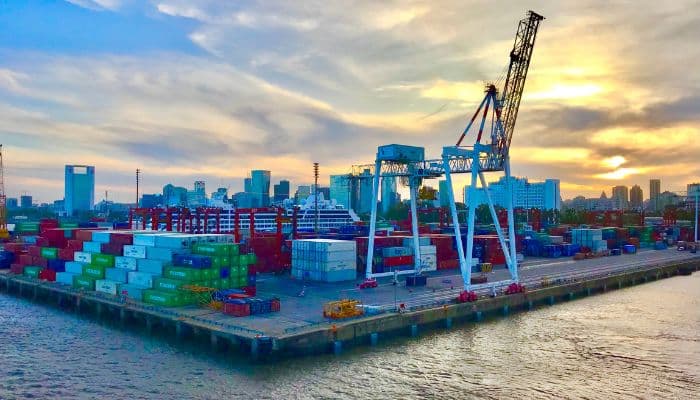
A passenger terminal has been recently built to accommodate the growing cruise liners that call to the New Port.
There is also a nature reserve bordering the coastline. There is also an LPG Jetty close to the entrance of the South Port. There is also a floating dry dock and a shipyard, a power station and an oil tanker berth.
The South Dock houses the container terminal and berths for tankers.
Approximately 2,200 vessels, 11,800,000 tonnes of cargo, 1,150,000 TEU, and 1,000,000 passengers are handled annually at Buenos Aires Port.
You might also like to read-
- 10 Major Ports In Canada
- 10 Major Ports In The Caribbean
- 10 Major Ports Of Scotland
- 20 Largest Container Shipping Companies In The World In 2023
- 10 Major Adriatic Seaports
Disclaimer :
The information contained in this website is for general information purposes only. While we endeavour to keep the information up to date and correct, we make no representations or warranties of any kind, express or implied, about the completeness, accuracy, reliability, suitability or availability with respect to the website or the information, products, services, or related graphics contained on the website for any purpose. Any reliance you place on such information is therefore strictly at your own risk.
In no event will we be liable for any loss or damage including without limitation, indirect or consequential loss or damage, or any loss or damage whatsoever arising from loss of data or profits arising out of, or in connection with, the use of this website.
Do you have info to share with us ? Suggest a correction
Disclaimer :
The information contained in this website is for general information purposes only. While we endeavour to keep the information up to date and correct, we make no representations or warranties of any kind, express or implied, about the completeness, accuracy, reliability, suitability or availability with respect to the website or the information, products, services, or related graphics contained on the website for any purpose. Any reliance you place on such information is therefore strictly at your own risk.
In no event will we be liable for any loss or damage including without limitation, indirect or consequential loss or damage, or any loss or damage whatsoever arising from loss of data or profits arising out of, or in connection with, the use of this website.

About Author
Zahra is an alumna of Miranda House, University of Delhi. She is an avid writer, possessing immaculate research and editing skills. Author of several academic papers, she has also worked as a freelance writer, producing many technical, creative and marketing pieces. A true aesthete at heart, she loves books a little more than anything else.
Latest Maritime Knowledge Articles You Would Like:
Daily Maritime News, Straight To Your Inbox
Sign Up To Get Daily Newsletters
Join over 60k+ people who read our daily newsletters
By subscribing, you agree to our Privacy Policy and may receive occasional deal communications; you can unsubscribe anytime.



